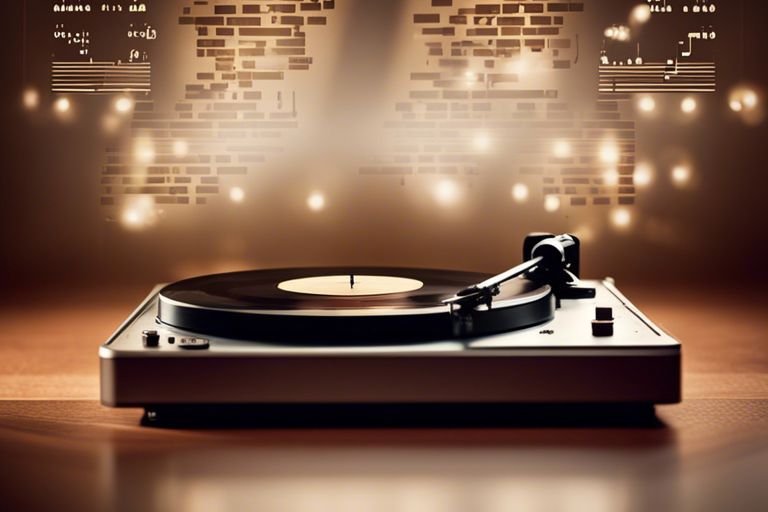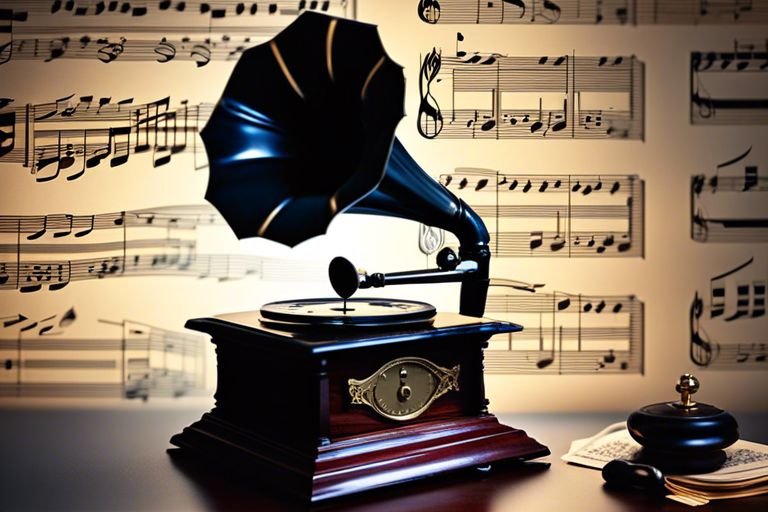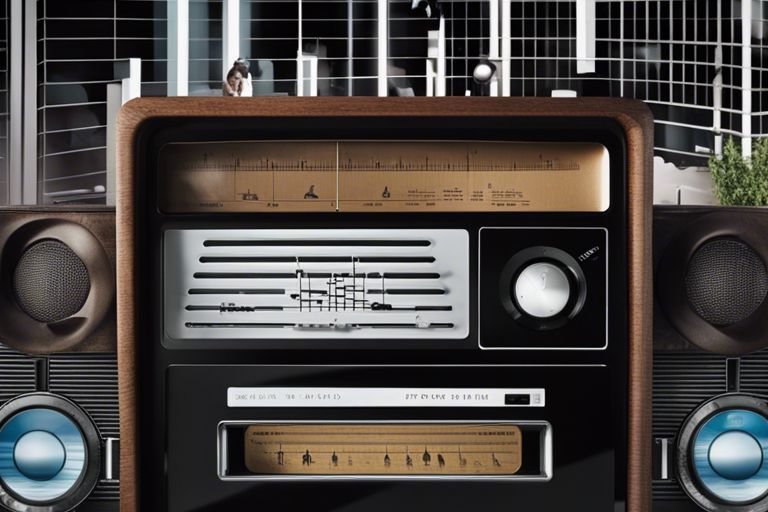Let’s delve into the intriguing world of long-playing records, commonly known as LPs, and uncover the rich history and significance of this iconic format in music. LPs revolutionized the way music was consumed and enjoyed, and their impact continues to resonate in the music industry to this day. As an avid music enthusiast, I have been fascinated by the evolution of music formats, and the LP holds a special place in my heart. In this comprehensive guide, I will provide you with a thorough understanding of what an LP music is, its historical context, and why it remains beloved by collectors and audiophiles alike. Whether you’re new to the world of vinyl or a seasoned aficionado, this post will shed light on the enduring legacy of the LP and its role in shaping music culture.
Key Takeaways:
- Origin of LP Music: LP, or long-playing, records revolutionized the way music was consumed, allowing for longer durations of music to be stored and played back in higher quality.
- Impact on Music History: LP records changed the way music was experienced, leading to the rise of concept albums and the expansion of creative possibilities for artists.
- Technological Advancements: LP records paved the way for advancements in audio technology, including stereo sound and vinyl pressing techniques, contributing to the development of modern music production.
- Cultural Significance: LP music played a pivotal role in shaping musical trends and genres, influencing generations of musicians and listeners alike.
- Collectibility and Nostalgia: LP records continue to hold a special place in music history, with collectors and enthusiasts valuing their unique sound, album cover art, and nostalgic appeal.
The Evolution of Long-Playing Records
To truly understand the significance of LP music, we must look back at the evolution of long-playing records. The concept of playing music from a flat disc with spiral grooves dates back to the late 19th century, but it wasn’t until the 1940s and 1950s that the modern LP as we know it began to take shape. This period saw the development of vinyl records with microgroove technology, allowing for longer playing times and improved sound quality. The evolution of LP music revolutionized the way music was produced, distributed, and consumed.
The Birth of LP Music
The birth of LP music can be traced back to the introduction of the 33 1/3 RPM vinyl record by Columbia Records in 1948. This development allowed for up to 30 minutes of music to be played on each side of the record, a significant improvement over the 78 RPM format that could only hold around 3-4 minutes per side. The longer playing time of LPs allowed artists to create full-length albums, paving the way for concept albums and extended musical narratives. This shift in format had a profound impact on the way music was recorded and consumed, giving artists the freedom to explore new creative possibilities.
Impact on Music Industry
The introduction of LP music had a profound impact on the music industry, transforming the way music was produced, distributed, and consumed. Record labels were able to package and sell complete albums, leading to the rise of the album as a cohesive art form. This shift in format also influenced the way artists approached songwriting and album production, with a focus on creating a cohesive listening experience from start to finish. The popularity of LP music also led to advancements in recording technology and studio production, as artists and engineers sought to take full advantage of the extended playing time and improved sound quality offered by vinyl records.
In conclusion, the evolution of long-playing records has had a lasting impact on the music industry, revolutionizing the way music is created, distributed, and consumed. The birth of LP music marked a turning point in the history of recorded music, allowing for longer playing times and improved sound quality. The impact of LP music continues to be felt today, with vinyl records maintaining a devoted following and influencing the way artists approach album production.
Exploring Different Types of LP Music
If you’re new to the world of LP music, understanding the different types available can be overwhelming. Let me break it down for you. Here are the main types of LP music:
- Vinyl Records – These are the classic LPs that most people are familiar with. They come in various sizes and playback speeds, and are a staple in any music collector’s library.
- Picture Discs – These LPs have images printed directly onto the playing surface, making them visually appealing as well as a unique listening experience.
- Colored Vinyl – These LPs are manufactured using colored vinyl, adding a visual element to the listening experience.
- Reissues and Remasters – These are new pressings of classic albums, often with improved sound quality and additional bonus material.
- Limited Editions and Box Sets – These are special releases that often include multiple LPs, exclusive artwork, and other collectible items.
Any music enthusiast should explore the diverse world of LP music to find the type that best suits their taste.
| Type | Description |
|---|---|
| Vinyl Records | The classic LPs, available in various sizes and playback speeds. |
| Picture Discs | LPs with images printed directly onto the playing surface. |
| Colored Vinyl | LPs manufactured using colored vinyl for a visual element. |
| Reissues and Remasters | New pressings of classic albums with improved sound quality and bonus material. |
| Limited Editions and Box Sets | Special releases that often include multiple LPs and exclusive artwork. |
Genre Variations
LP music encompasses a wide range of genres, from rock and pop to jazz and classical. Each genre offers its own unique listening experience, with different production techniques and artistic approaches. Whether you’re a fan of the raw energy of rock or the intricate compositions of classical music, there’s an LP for every musical taste. Exploring different genres of LP music can open up new sonic worlds and broaden your musical horizons.
Influential LP Albums
Throughout the history of music, there have been numerous LP albums that have had a profound impact on the industry and the art form itself. From groundbreaking debut albums to genre-defining classics, these influential LPs have shaped the way we perceive and consume music. Whether it’s The Beatles’ “Sgt. Pepper’s Lonely Hearts Club Band” or Miles Davis’ “Kind of Blue,” these albums have left an indelible mark on the world of music and continue to inspire generations of artists and listeners.
The Resurgence of LP Music in the Digital Age
Keep in mind that the resurgence of LP music in the digital age has been nothing short of remarkable. Despite the prevalence of digital music streaming services, there has been a renewed interest in vinyl records. This resurgence has led to a renaissance in the way music is experienced and appreciated.
Vinyl Collecting Trends
As a music enthusiast, you may have noticed the growing trend of vinyl collecting. Many music lovers are drawn to the unique experience that comes with owning and collecting vinyl records, from the tactile sensation of flipping through albums to the warm, organic sound that vinyl produces. The thrill of hunting for rare and limited-edition records has also contributed to the resurgence of vinyl collecting.
LP Music in Modern Music Production
In modern music production, the use of LP music has become increasingly prevalent. Many artists and producers are embracing the analog warmth and depth that vinyl records impart to their music. Incorporating vinyl samples and even recording directly to vinyl have become popular techniques in the quest for a distinctive, vintage sound. The revival of LP music in modern music production has added a layer of authenticity and character to contemporary music.
What Is an LP Music – Exploring Long-Playing Records in Music History
To wrap up, I hope this article has provided you with a comprehensive understanding of what an LP music is and how it has played a significant role in music history. From its origins in the 1940s to its prominence in the 1960s and 70s, the LP record has revolutionized the way we listen to and appreciate music. Its introduction allowed for longer playtime, better sound quality, and became the preferred format for albums. Even though digital formats have taken over, the LP record continues to hold a special place in the hearts of music enthusiasts and collectors. Its resilience and enduring appeal speak volumes about the impact it has had on the music industry and the art of recorded music.
FAQ
Q: What is an LP music?
A: An LP, or long-playing record, is a format of vinyl music that typically contains about 30 minutes of audio per side. LPs are 12 inches in diameter and play at a speed of 33⅓ revolutions per minute.
Q: What are the advantages of LP music?
A: LP music offers high-quality sound reproduction and a unique listening experience. Additionally, LPs often include artwork and liner notes that enhance the overall music appreciation process.
Q: When were LP records introduced in music history?
A: LP records were introduced in the late 1940s by Columbia Records and quickly became the preferred format for music albums. They replaced the 78 rpm shellac records, offering a longer playtime and better sound quality.
Q: How do LP records compare to other music formats?
A: LP records are known for their warm, analog sound and tactile appeal. They have experienced a resurgence in popularity in recent years, as many music enthusiasts appreciate the physicality and tangible nature of vinyl records.
Q: Are LP music records still being produced today?
A: Yes, LP music records are still being produced by both major labels and independent artists. The resurgence of vinyl records has led to new releases and reissues becoming available in record stores and online retailers.




